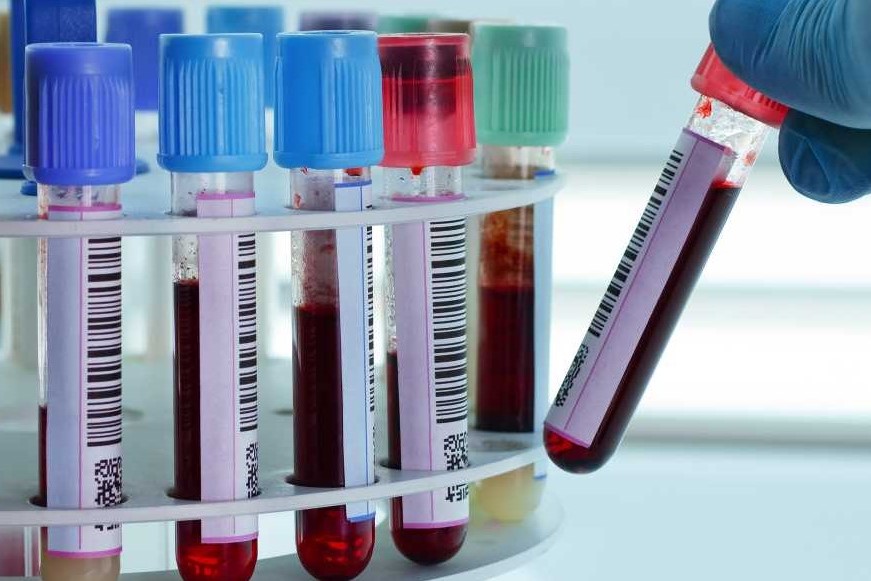
Ammoniaemia: why it is important to detect ammonium concentration in the blood
About ammoniaemia: determination of ammonia is most often required to assess the degree of liver damage for severe liver disease
Ammoniaemia indicates the concentration of ammonium in the blood, which is a nitrogen product derived mainly from the metabolism of food proteins and intestinal bacterial fermentation
The process by which ammonium is produced from proteins is the deamination of individual amino acids that lose their amine group (NH2).
Ammonium in the blood derives from the above-described metabolism of amino acids, but also from the metabolism of amines and from the absorption, in the large intestine, of ammonia resulting from the breakdown of amino acids and urea (dietary or blood in the case of haemorrhage) by the local bacterial flora.
An important share of ammonium is also formed in the kidney
As ammonia is a toxic metabolite for the central nervous system, it must be rapidly converted into urea by the liver, through the so-called urea cycle, and then eliminated with the urine.
Problems such as liver failure and congenital enzyme defects can impair this transformation, resulting in serious damage to the body.
The ammonia assay is performed on a blood sample taken from a peripheral vein, usually in the arm
The blood sample is then placed in a test tube containing anticoagulant (EDTA), which is kept cold.
There are mainly two methods for measuring ammonium concentration: the enzymatic method, which makes use of plasma from the blood by centrifugation, where the plasma must be absolutely free of haemolysis, and the ‘dry’ chemistry method, which is based on the principle of micro-diffusion of a drop of whole blood.
The ammonium ion present in it is transformed into ammonia gas, which will react to develop a colour that is directly proportional to the amount of ammonium present.
Determination of ammonia is most often required to assess the degree of liver damage for severe liver disease, in the presence of kidney failure or when dealing with certain rare genetic diseases, such as those related to the lack of synthesis of urea cycle enzymes.
It may also be required when altered behaviour and states of consciousness up to coma are observed in the patient.
Thus, ammoniaemia is useful when, for example, an infant manifests frequent vomiting and lethargy, or if a child has continuous vomiting and abnormal drowsiness
It is a useful parameter for the diagnosis of hepatic encephalopathy and for the diagnosis of Reye’s syndrome, a very rare but potentially lethal syndrome that causes inflammation and oedema of the brain and degeneration of the liver.
The blood sample must be taken without venous stasis, possibly on an empty stomach, unless there is urgency.
The blood sample must be placed in a test tube with anticoagulant and immediately afterwards either immersed in a bath containing water and ice or transported in a polystyrene container with a siber.
It must reach the laboratory immediately; all this to slow down the neoformation of ammonium that would occur over time at room temperature.
Factors to be avoided that can cause an increase in values include: very intense muscular exertion, a diet excessively rich in protein, parenteral nutrition (intravenous), cigarette smoking, alcohol abuse, certain drugs, including acetazolamide, furosemide, barbiturates, isoniazid, valproic acid.
Decreased values may result from: hypoprotein (protein-deficient) diets, drugs, such as certain broad-spectrum antibiotics, lactulose, levodopa and potassium salts.
Normal values vary depending on the method used.
The micro diffusion method has 0-75 µg/dL as normal values, the enzymatic method must be below 100 µg/dL.
Increased levels of ammonium in the blood indicate that normal metabolism, and therefore normal elimination of ammonium in the body, is not occurring.
In new-born babies, this can occur in the event of a defect in one of the enzymes of the urea cycle, as well as during haemolytic disease of the new-born.
As already mentioned, an increased ammonia level is useful in the diagnosis of Reye’s syndrome, which in infants generally occurs as a consequence of a viral disease (influenza, chickenpox) aggravated by the use of aspirin.
A previously undiagnosed hereditary defect in the urea cycle can also be detected in children.
In general, it can be said that in children and adults high ammonium concentrations may indicate liver or kidney damage.
High blood ammonium levels may be common in severe stomach or intestinal bleeding due to protein release from blood cells, in heart failure, in reduced liver perfusion, in acute leukaemia and in metabolic alkalosis.
Decreased levels of ammonia can be seen in hypertension, during the use of certain antibiotics (neomycin) and as a consequence of a hypoprotein diet.
Read Also:
Emergency Live Even More…Live: Download The New Free App Of Your Newspaper For IOS And Android
What Is Albumin And Why Is The Test Performed To Quantify Blood Albumin Values?
What Is Cholesterol And Why Is It Tested To Quantify The Level Of (Total) Cholesterol In The Blood?
Gestational Diabetes, What It Is And How To Deal With It
What Is Amylase And Why Is The Test Performed To Measure The Amount Of Amylase In The Blood?
Adverse Drug Reactions: What They Are And How To Manage Adverse Effects
Albumin Replacement In Patients With Severe Sepsis Or Septic Shock
Provocation Tests In Medicine: What Are They, What Are They For, How Do They Take Place?
What Are Cold Agglutinins And Why Is The Test Performed To Quantify Their Values In The Blood?


